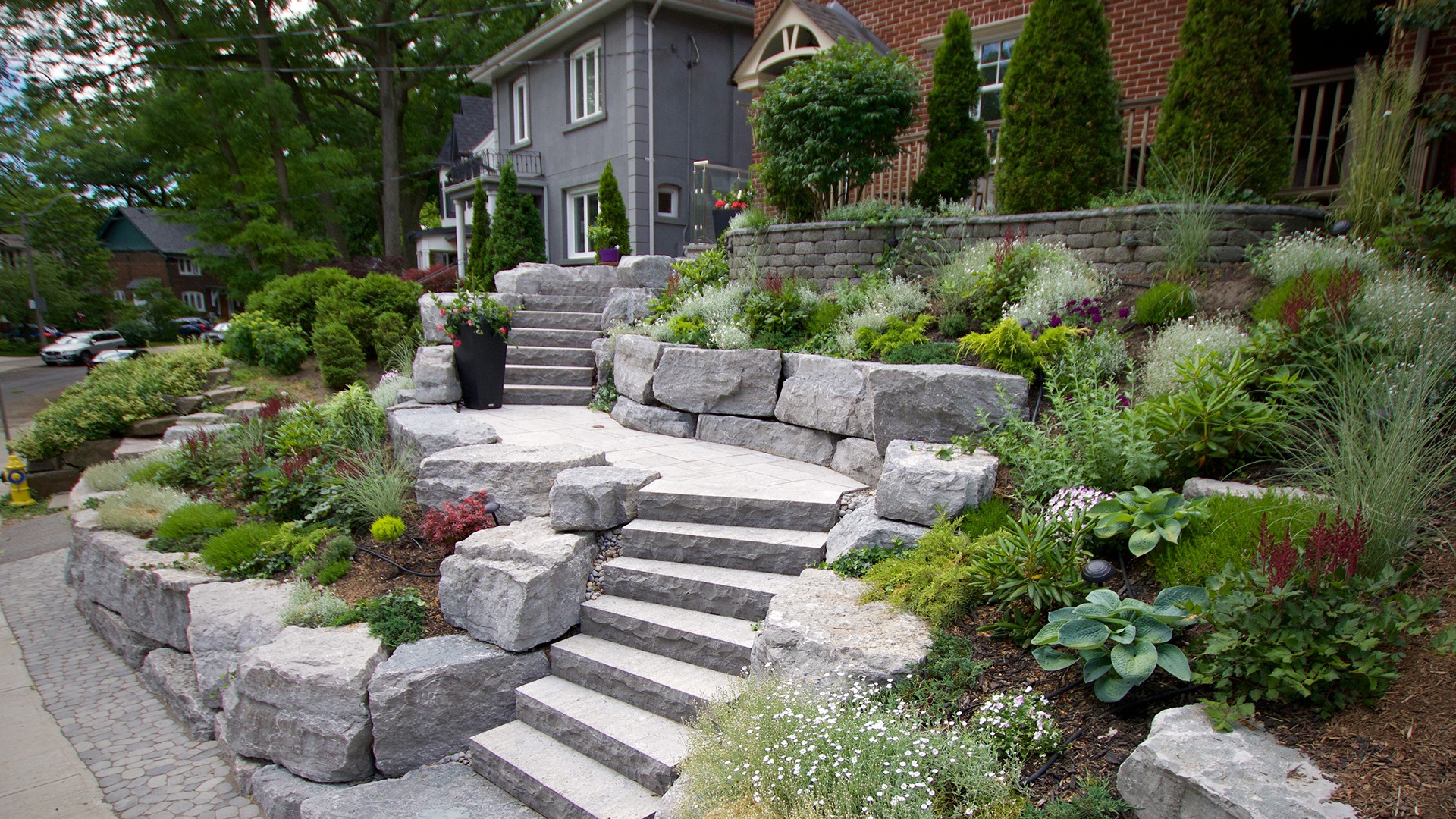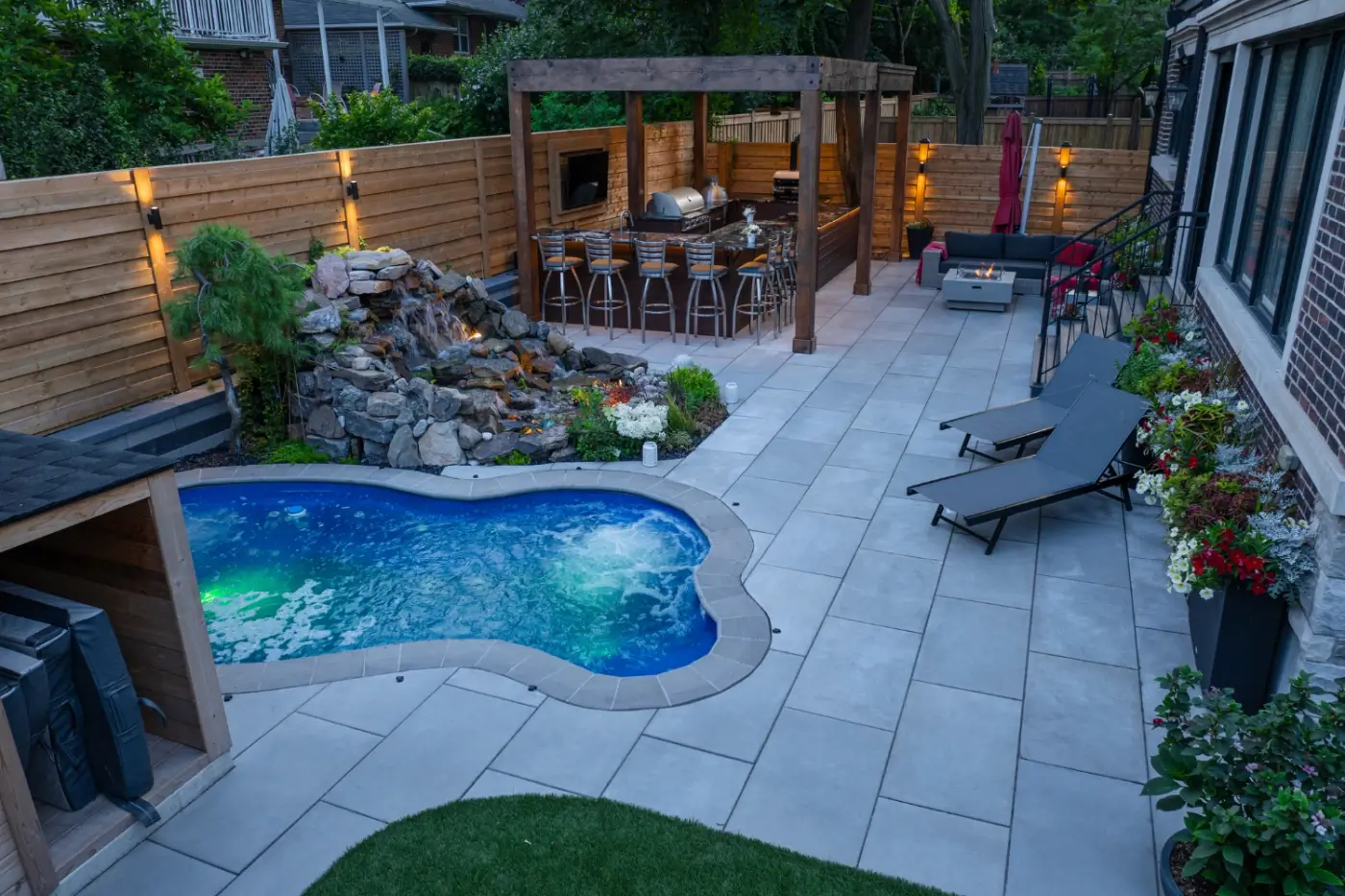Landscaping services trends for the upcoming year
Comprehending the Comprehensive Range of Functions in Professional Landscape Design Services
The substantial scope of professional landscaping services incorporates a range of fundamental components - landscaping services. It consists of landscape design concepts, plant choice, and hardscaping functions. Additionally, it deals with irrigation systems and maintenance methods. Each facet plays a crucial role in creating practical and aesthetically pleasing exterior rooms. Recognizing exactly how these components interact can disclose much about the art and science of landscape design. However, the trip right into this elaborate area is simply beginning
Landscape Design Principles
Effective landscape design principles are important for creating harmonious outdoor spaces that improve both visual appeal and functionality (Learn More). These principles lead the plan of elements within the landscape, making sure a cohesive aesthetic experience. Trick elements consist of equilibrium, which disperses visual weight uniformly; percentage, which relates the dimension of numerous aspects to every various other and the space; and unity, which develops a feeling of wholeness through constant themes and products

Plant Option and Installation
In the domain name of expert landscape design, plant option and installation play a critical role in accomplishing a growing garden. Emphasizing indigenous plant benefits, seasonal considerations, and the particular dirt and sunshine needs of each species assures a sustainable and visually pleasing landscape. Cautious planning in these areas not just improves biodiversity however also promotes lasting environmental wellness.
Indigenous Plant Advantages
Why should house owners consider native plants for their landscape design tasks? Indigenous plants use many advantages that improve both looks and environmental sustainability. They are well-adapted to regional environments, calling for much less water and upkeep contrasted to non-native species. This resilience decreases the need for chemical fertilizers and chemicals, advertising a healthier environment. Furthermore, indigenous plants supply environment and food for local wildlife, consisting of pollinators, which can boost biodiversity in domestic locations. Their familiarity with local dirt and weather problems likewise leads to much better development rates and long life. By picking native plants, homeowners not just produce aesthetically enticing landscapes yet likewise add to environmental conservation, making a favorable effect on their regional atmosphere. Indigenous plants stand for a wise choice for landscape design tasks.
Seasonal Plant Considerations
Homeowners who have welcomed indigenous plants in their landscape design can further boost their outside spaces by thinking about seasonal plant options. By integrating plants that prosper in specific periods, they can produce dynamic and visually enticing landscapes throughout the year. Springtime might introduce vivid blooms like tulips and daffodils, while summertime can display lavish vegetation and vibrant perennials. Autumn introduces a palette of cozy tones with goldenrods and asters, while wintertime can be emphasized with evergreens and ornamental turfs for structure. Specialist landscaping companies commonly recommend choosing plants that not just complement existing indigenous varieties but likewise provide year-round rate of interest and support local wild animals. This thoughtful strategy to seasonal plant selection guarantees a consistently advancing and sustainable garden setting.
Dirt and Sunshine Needs
Successful landscaping depends upon recognizing the specific dirt and sunshine requirements of plants. Different types flourish under varying problems, needing a cautious assessment of both aspects during the option process. Dirt types, such as sandy, clay, or loamy, influence drain, nutrient availability, and origin development. Additionally, pH degrees can affect plant health, necessitating soil screening to establish suitability. Sunlight demands vary considerably; some plants grow completely sun, while others prefer full or partial color. A professional landscaping company considers these aspects to assure peak development and aesthetic allure. By aligning plant selections with the environment's specific characteristics, landscapes can attain sustainability, strength, and aesthetic consistency, eventually resulting in successful plant establishment and long-lasting upkeep.
Hardscaping Features and Construction

While landscaping commonly evokes photos of rich plant and vibrant blossoms, hardscaping features play a vital function in defining outside spaces. These components, that include patio areas, pathways, maintaining walls, and decorative stonework, give structure and functionality to yards and gardens. Hardscaping uses materials such as concrete, rock, wood, and block, permitting varied layouts that match the all-natural landscape.
The building and construction of hardscaping features calls for careful planning and implementation to guarantee resilience and visual allure. Specialists evaluate website problems, drainage, and spatial relationships to create cohesive outdoor atmospheres. Proper installation strategies are vital, as they avoid concerns like disintegration and changing gradually.
Including hardscaping not only boosts the aesthetic passion of a residential or commercial property yet likewise promotes outdoor activities, making it a basic element of detailed landscape design services. Eventually, thoughtful hardscaping adds to both the capability and appeal of outdoor spaces.
Irrigation Systems and Water Monitoring
Reliable irrigation systems and water monitoring are essential parts of expert landscape design, as they ensure that plants obtain the needed hydration for suitable growth. These systems can differ from easy drip watering configurations to sophisticated computerized automatic sprinkler, developed to meet the specific requirements of diverse landscapes. Appropriate water management not just maximizes water usage, decreasing waste, yet additionally boosts plant health and wellness and reduces condition risks.
Landscaping professionals examine different variables, including soil kind, plant species, and regional environment, to create tailored irrigation remedies. In addition, incorporating rain harvesting strategies can further boost sustainability and performance. Regular maintenance of irrigation systems is important to maintain functionality and protect against leakages, which can result in water loss and boosted prices (Learn More). Ultimately, a properly designed irrigation system plays an essential function in maintaining the aesthetic allure of outside spaces while promoting eco-friendly stewardship within specialist landscaping methods
Lawn Care and Maintenance Approaches
Lawn treatment and upkeep methods are basic for accomplishing a lush, healthy and balanced lawn that boosts the general landscape. These approaches include numerous practices targeted at promoting suitable development and visual appeal. Normal mowing is essential, as it motivates thick, also growth while protecting against weeds from developing. Additionally, appropriate fertilizing offers necessary nutrients, with applications customized to the specific yard kind and soil conditions.
Watering techniques need to concentrate on deep, occasional watering to motivate origin growth, while oygenation improves dirt structure and promotes nutrition absorption. Insect and disease administration is likewise crucial; determining concerns early permits effective therapies that reduce damages.
Lastly, overseeding can rejuvenate thin or broken lawns, enhancing thickness and color. By executing these targeted yard treatment techniques, landscape design specialists can assure that yards continue to be healthy and vibrant throughout the seasons, significantly adding to the total elegance of the property
Seasonal Landscape Treatment and Maintenance
As the periods modification, correct landscape care becomes important for keeping the wellness and appeal of outside areas. Each season provides one-of-a-kind difficulties and needs. In spring, landscape experts concentrate get more info on pruning, planting, and feeding to encourage growth. Summer needs regular watering, weed control, and pest monitoring to safeguard recently established plants.

Throughout the year, seasonal landscape upkeep assurances that outside locations remain aesthetically enticing and healthy and balanced. Specialist services can offer customized maintenance strategies that adjust to the details demands of each season, allowing home owners to delight in vivid landscapes year-round. On the whole, seasonal care is an important element of specialist landscape design that advertises long life and visual worth.

Sustainable Landscaping Practices
A growing number of residential property owners are accepting sustainable landscaping techniques to develop eco-friendly outside spaces. These practices focus on conserving sources, enhancing biodiversity, and lessening environmental effect. Indigenous plants are frequently picked for their low water needs and compatibility with local communities, minimizing the need for chemical plant foods and pesticides. Rainfall gardens and permeable paving are used to take care of stormwater runoff, promoting groundwater recharge and minimizing erosion.
Sustainable landscaping includes natural horticulture strategies that prioritize soil health and promote all-natural bug control. Reliable irrigation systems, such as drip irrigation and rain harvesting, aid optimize water usage. In addition, landscape designers significantly promote for the usage of recycled products, such as redeemed timber and rocks, to lessen waste. By embracing these sustainable methods, residential property proprietors not only add to ecological conservation however also develop aesthetically pleasing environments that can grow with marginal upkeep.
Regularly Asked Questions
The length of time Does a Landscape Design Job Commonly Take to Complete?
Normally, a landscaping project can take anywhere from a couple of days to numerous weeks to complete, relying on the project's intricacy, dimension, and style needs. Aspects such as weather and source schedule also influence timelines.
What Aspects Influence the Expense of Landscaping Services?
Various elements influence landscape design service costs, including job size, design intricacy, worldly high quality, labor costs, geographic place, and seasonal need. Each component adds distinctly to the total monetary demands of a landscape design job.
Are Landscape Design Solutions Available Year-Round?
Landscaping services are typically readily available year-round, although accessibility may vary based upon area, seasonal climate conditions, and particular service offerings. Some services could be limited throughout severe weather condition or off-peak seasons.
Do Landscape Design Firms Deal Guarantees on Their Work?
Several landscape design business do use service warranties on their job, which can differ in length and insurance coverage. Customers are motivated to inquire regarding details terms, guaranteeing they understand what is ensured and any type of problems that use.
Can I Design My Landscape Without Expert Help?
Yes, individuals can develop their landscapes without professional help. They might lack proficiency in plant selection, layout, and ecological considerations, potentially leading to less efficient layouts that might require pricey modifications later.
In the domain name of expert landscape design, plant choice and setup play a vital duty in achieving a growing yard. Homeowners that have welcomed native plants in their landscaping can even more boost their outdoor areas by taking into consideration seasonal plant choices. Successful landscaping hinges on understanding the details dirt and sunlight needs of plants. Effective irrigation systems and water management are crucial parts of professional landscape design, as they guarantee that plants obtain the essential hydration for optimal growth. Landscape design professionals examine various variables, consisting of soil type, plant species, and regional climate, to create customized watering solutions.